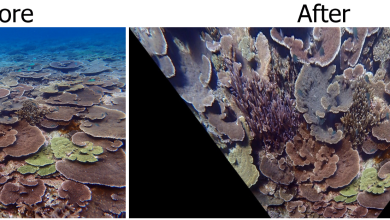Dr. Grace-Not Just the Snake Guy
Many people on campus know Dr. Grace as “The Snake Guy,” but many people don’t know much else about him. Sure, at a first glance, he may seem to be what people consider “The Snake Guy,” especially after seeing him on Discovery Channel or walking into his snake lab, but Dr. Grace has many hidden passions, including raising rare species of tortoises! Dr. Grace had dreamed about owning rare tortoises since he was a small child and about five years ago, he said, “You know what? Time’s a-wasting; I want to do this.” After putting his mind to getting new tortoises and learning everything he could about them, Dr. Grace ended up with endangered Radiated tortoises from Madagascar, threatened Indian star tortoises, Red-footed tortoises from South America, Giant African spurred tortoises (the third largest species on earth!) and the African Leopard tortoise,. So, those who think Dr. Grace is only about snakes are seriously mistaken.
Dr. Grace, while being a professor of biology at Florida Tech, also serves as the associate dean of the College of Science. Dr. Grace fell in love with biology at an early age. When asked how he got involved in his research, Dr. Grace replied, “I grew up thinking I was going to be a field zoologist and I wanted to chase snakes and turtles out in the woods.” However, Dr. Grace didn’t end up a field biologist at first. Instead, he ended up at Georgia Tech for applied biology where he developed practical applications of biology. Dr. Grace continued his education at Emory University Medical School for his Ph.D. in a neurobiology program where he fell in love with vision, but something was still missing. Dr. Grace was mostly using his education on animal models, not live organisms, so after he finished his Ph.D., Dr. Grace went to the University of Virginia where he joined what he called “a real biology department.” There, he became interested in animal behavior and biology in the wild.
When Dr. Grace finally landed at Florida Tech, he generated an extremely successful lab, home to many research projects including:
-Mechanisms of infrared imaging in pit vipers/pythons
-Development of the retina in tarpon and other marine fish
-Development of vision in marine turtles (especially green and loggerheads)
-Functional organization of the whale retina (bow headed and grey whales, really interested in Right whales.)
A lot of people are probably thinking, “That’s great, Dr. Grace has this amazing lab, but what do I have to do to get involved in some of these projects?” The answer is simple: ask. In my opinion, Dr. Grace is one of the nicest and most approachable professors at Florida Tech. He is always open to hear new research ideas and when asked about undergraduate opportunities, Dr. Grace replied “I love to work with talented undergraduate students and they tend to do very well.” Two examples of undergraduates doing extremely well are James Van Dyke, who published a paper in Animal Behavior that showed the first proof that snakes use infrared systems for targeting prey and for defense against predators. He’s now working on his Ph.D. in Australia. A second example is Kim Rigano, whose research on the Florida scrub jay and the yellow rat snake won several awards and grants, including the Northropp Grumman Champion Award , a grant from Tri Beta, a grant from Sigma Xi (honor society), first place in the regional Tri Beta Conference, and first place in the National Tri Beta conference held in Puerto Rico.
Dr. Grace’s advice to undergraduates: “Get involved. Get to know your professors and get involved in someone’s laboratory. Doing this will build your skill set as well as give you the strong relationship with professors that will help them write better recommendations for you in the future. “







